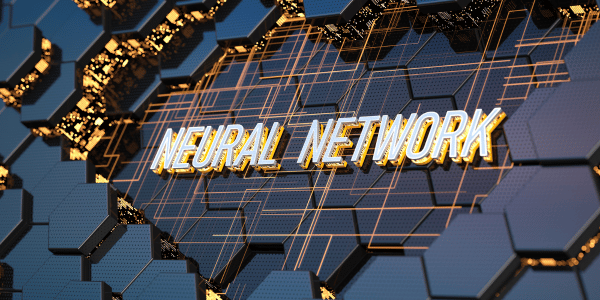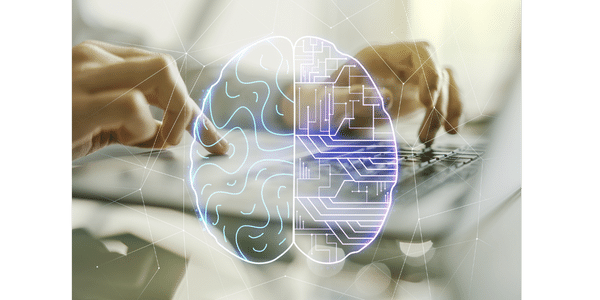Address
304 North Cardinal St.
Dorchester Center, MA 02124
Work Hours
Monday to Friday: 7AM - 7PM
Weekend: 10AM - 5PM
Address
304 North Cardinal St.
Dorchester Center, MA 02124
Work Hours
Monday to Friday: 7AM - 7PM
Weekend: 10AM - 5PM

Neural networks are at the heart of modern artificial intelligence and machine learning. These powerful algorithms mimic the structure and functionality of the human brain, enabling computers to learn and make predictions. In this article, we will delve into the neural network basics, explaining their structure, capabilities, and remarkable possibilities.
To comprehend the inner workings of neural networks, it is important to grasp their fundamental building blocks. Neural networks are a type of machine learning. They serve as the foundation for a more advanced approach called deep learning.
This allows deep learning algorithms to learn complex patterns and extract valuable insights from data. In simple terms, neural networks are the basis, and deep learning builds upon that to tackle more sophisticated tasks.
They consist of three main layers: the input layer, hidden layers, and the output layer. These layers receive raw data, process it through mathematical transformations, and provide the desired output.
Neural networks rely on specific components to process and analyze information. This is just like a well-designed structure that requires a solid framework. We can gain insights into the remarkable capabilities of neural networks by understanding these building blocks.
So, let’s get to it.

At its core, a neural network functions as a complex interconnected system of nodes known as neurons. These neurons actively process and analyze information. Each neuron in the network receives input signals, performs calculations, and generates an output. This intricate system draws inspiration from the remarkable workings of the human brain.
How do neural networks work for beginners?
For beginners, neural networks help computers understand and process information inspired by the amazing workings of the human brain.
Think of them as a web of interconnected dots. Each dot takes in input and passes it to the next dot until a final answer is reached. This helps computers learn and make decisions based on patterns in the data they receive.
Neural networks consist of three main layers:
The input layer actively receives raw data or features, which the hidden layers process using a series of mathematical transformations. Finally, the output layer provides the desired output, such as a classification or prediction.

Practitioners commonly employ three fundamental strategies or learning paradigms in the context of neural networks. In other words, what are the 3 strategies of neural networks?
In supervised learning, a neural network actively trains on labeled data, pairing input data points with desired outputs. The network learns to predict the correct output based on the given inputs by adjusting its parameters through a process called backpropagation.
It’s much like having a teacher guide the network’s learning process.
Unsupervised learning involves training a neural network on unlabeled data to uncover patterns, relationships, or structures. This strategy helps the network identify similarities or reduce data complexity through tasks like clustering and dimensionality reduction.
Reinforcement learning takes a different approach as a neural network learns through trying and making mistakes within an environment. The network receives feedback in the form of rewards or penalties based on its actions. The objective is to maximize cumulative rewards by discovering optimal strategies or policies.
Reinforcement learning trains neural networks to achieve remarkable success in playing games, controlling robots, and handling complex decision-making processes.
Now, let’s explore the various types of neural networks that have revolutionized different domains.
Feedforward neural networks are the simplest type, where information flows in one direction from the input layer to the output layer. These networks are excellent for tasks such as image classification, speech recognition, and sentiment analysis.
Recurrent neural networks (RNNs) process sequential data, where the current output depends not only on the current input but also on previous inputs. RNNs have a memory element that allows them to retain information from previous steps, making them suitable for tasks like language modeling, machine translation, and time series prediction.
Convolutional neural networks (CNNs) excel in image and video processing tasks. They are specifically designed to recognize patterns and extract features.
CNNs utilize convolutional layers, pooling layers, and fully connected layers to process images. They achieve state-of-the-art performance in tasks like object detection, image classification, and image segmentation.
Generative Adversarial Networks, or GANs, stand out as a captivating facet within the realm of generative AI. This dynamic duo comprises a creator, known as the generator, and an evaluator, called the discriminator. The generator crafts data while the discriminator scrutinizes it. They forge a fascinating interplay between creation and critique.
The astonishing knack of GANs lies in their capacity to fabricate synthetic data mirroring the distribution of their training data. This ability holds particular significance in fields such as image synthesis, text generation, and anomaly detection, offering a spectrum of thrilling prospects.
Moreover, platforms like Google Cloud AI are revolutionizing the accessibility and user-friendliness of GANs, rendering these advanced features of generative AI more accessible for both enterprises and imaginative individuals.
To fully grasp the power of neural networks, let’s delve into key concepts that shape their behavior and performance.
Training a neural network involves iteratively adjusting the weights and biases of the neurons to minimize the difference between the predicted output and the desired output. This process is known as backpropagation. Through backpropagation, neural networks learn from labeled training data and improve their performance over time.
Overfitting occurs when a neural network becomes too specialized in the training data, leading to poor generalization of unseen data. Regularization techniques like dropout and weight decay add constraints to the model, preventing overfitting and enhancing robustness.
Transfer learning is a technique that leverages pre-trained neural network models trained on large datasets. Transfer learning speeds up training on new datasets by using this knowledge as a starting point for a new task, especially when data is limited.
To understand the neural network basics, let’s break them down into simple steps.
By following these steps, a neural network actively learns to recognize patterns. It also makes predictions and solves complex problems using the training data it has been exposed to.
These five examples of basic neural networks showcase the immense possibilities they offer. They compose music, assist in medical diagnoses, support wildlife conservation, enable autonomous systems, and demonstrate that the applications of neural networks are boundless, limited only by our imagination.
Imagine a basic neural network trained on a vast collection of melodies from different genres. This network can learn the patterns, harmonies, and rhythms of music and generate original compositions based on the learned knowledge. It could be a composer’s assistant, providing endless inspiration and unique musical creations.

In the healthcare field, a basic neural network can analyze patient symptoms, medical records, and test results to assist doctors in diagnosing diseases. By training the network on a diverse dataset of medical cases, it can learn to recognize patterns indicative of specific diseases and offer valuable insights to support accurate diagnoses.
Conservationists can leverage basic neural networks to identify and track endangered species. By analyzing images or audio recordings collected from the wild, the network can learn to detect and classify different species, helping researchers monitor populations, protect habitats, and contribute to wildlife preservation efforts.
Basic neural networks can empower drones to navigate complex environments independently. By training the network on aerial images and sensor data, the drone can learn to identify obstacles, plan optimal flight paths, and even perform tasks like package delivery or aerial inspections with minimal human intervention.
Basic neural networks make it easy to overcome language barriers. By training the network on pairs of translated texts, it can learn the intricate nuances of different languages and accurately translate between them, making cross-cultural communication smoother and more accessible than ever before.
Understanding the basics of neural networks is key to unlocking the vast potential of AI. By grasping the fundamental concepts and inner workings of neural networks, decision-makers, professionals, and leaders across various industries can harness the power of AI customization and tech solutions to drive innovation and achieve their goals.
As we continue to witness the growth of AI, it’s clear that the future holds exciting possibilities. With advancements in machine learning, deep learning, and automation AI, we’re on the cusp of a transformative era. So, embrace the opportunities AI presents, and together, let’s shape a future where technology and human ingenuity go hand in hand.
Remember, if you’re ready to explore AI’s limitless possibilities, don’t hesitate to reach out to me and the team at AI Dev Lab. We’re here to create tailor-made AI solutions that cater to your specific needs and industry requirements.
Neural networks offer several advantages. They can learn complex patterns and relationships in data, make accurate predictions, and handle high-dimensional inputs. Moreover, neural networks can adapt and improve their performance with more training data, making them highly flexible and powerful tools in machine learning.
Neural networks go beyond artificial intelligence and find applications in finance, healthcare, natural language processing, and computer vision. They revolutionize industries and drive innovation across disciplines.
Neural networks learn by adjusting their weights and biases during the training phase. They compare the predicted outputs with the actual outputs and use backpropagation to update the parameters. The iterative process of training allows neural networks to improve their predictions and make accurate decisions based on the given inputs.
Yes, neural networks can be applied to real-time tasks. The speed of inference depends on the complexity of the neural network and the hardware it utilizes, enabling real-time applications. Real-world uses include object detection systems, autonomous vehicles, and speech recognition, which employ neural networks.
Neural networks draw inspiration from the structure and function of the human brain but simplify its models. While they share some similarities, such as the use of interconnected nodes, neural networks are not a direct replica of the human brain. They focus on computational efficiency and solving specific tasks rather than emulating their full complexity.